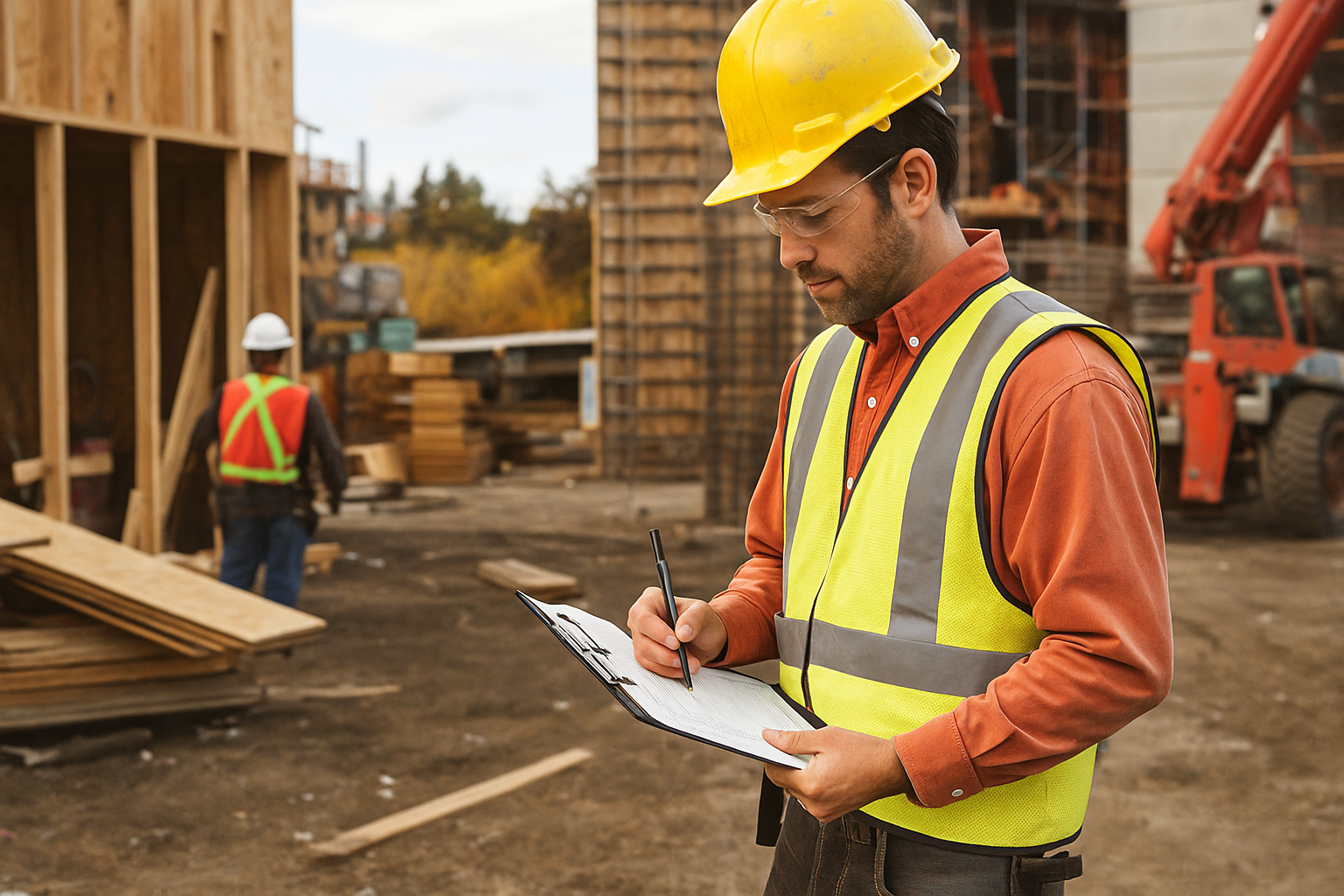
Top 5 Risks of Manual Safety Reporting (and How to Fix Them)
The Hidden Cost of Manual Safety Reporting
You can’t prevent tomorrow’s incident with yesterday’s paperwork.
Across construction and industrial worksites, manual safety reporting is still far too common. Crews fill out paper forms, safety managers chase signatures, and vital data often arrives long after it’s needed. It’s a process that feels familiar—but it’s also one that leaves organizations vulnerable.
Manual safety reporting risks extend well beyond inconvenience. They create blind spots, delay action, and trap valuable safety intelligence inside clipboards and spreadsheets. The result? Slow reactions, inconsistent data, and a reactive safety culture that can’t see risk forming in real time.
It’s time for a smarter, more connected approach. Here are the top five risks of manual safety reporting—and how SafetyVue fixes them with mobile data capture, AR-powered inspections, and predictive insights that keep teams ahead of risk.
Risk #1: Data Latency — Slow Information, Slow Reactions
When reports rely on paper or manual entry, there’s a lag between what happens in the field and what leadership sees in the dashboard—if it ever gets there at all.
That delay can mean the difference between preventing an incident and responding to one. If it takes hours or days for site data to be reviewed, organizations are already behind.
The Fix: Real-Time Mobile Reporting
With the SafetyVue Mobile App, every observation, inspection, and near-miss report is synced to the cloud the moment it’s recorded. Supervisors and safety leaders get real-time visibility into field conditions, enabling immediate corrective action.
The result: no more waiting on forms to surface. Just live, connected data that drives faster, more informed decisions.
Risk #2: Lost or Incomplete Paperwork
Paper has one fatal flaw—it disappears. Forms are misplaced in vehicles, left in toolboxes, or ruined by weather before they ever reach the office. Even digital spreadsheets can fail if they rely on manual uploads or disconnected systems.
Lost data doesn’t just frustrate safety teams; it creates compliance risks and erases valuable insights from your safety record.
The Fix: Cloud-Based Data Capture
SafetyVue’s Mobile App replaces paper with secure, automated data collection. Each report is instantly stored and accessible through a centralized cloud platform. Supervisors can search, share, and analyze reports without ever worrying about missing documentation.
With complete, verified records, organizations stay audit-ready—and confident that every data point is accounted for.
Risk #3: Human Error in Manual Inspections
Manual inspections rely heavily on individual judgment and consistency, which can vary from person to person and shift to shift. It’s easy to overlook small hazards, transpose data, or forget to capture photo evidence.
Over time, these human errors add up—producing reports that don’t fully reflect the real conditions on-site.
The Fix: Automated Data Capture with SafetyVue AR
SafetyVue AR changes the inspection process from subjective to objective. Using augmented reality, it scans the jobsite in minutes, capturing verifiable, visual data from every angle.
The system automatically identifies potential hazards, logs conditions, and generates an initial safety assessment—complete with images and geolocation data. Instead of handwritten notes, you get accurate, standardized reports ready for expert validation.
It’s not just faster—it’s smarter.
Risk #4: Disconnected Data = Incomplete Intelligence
Even when manual reports make it to the database, they often live in silos—separate from training records, incident logs, or asset histories. Without integration, teams see fragments of the truth rather than the full picture.
This lack of connection makes it difficult to uncover patterns, conduct root-cause analysis, or prioritize high-risk areas.
The Fix: Integrated Intelligence Through SafetyVue Insights
SafetyVue Insights unites every safety data point into a single source of truth.
Incident reports, AR scans, personnel training records, and equipment histories all feed into one connected system.
This integration transforms raw data into usable intelligence, highlighting correlations that would otherwise go unnoticed—like recurring risks tied to specific equipment or crews.
The outcome: faster investigations, stronger prevention strategies, and a more proactive safety culture.
Risk #5: Reactive, Not Predictive, Safety
Manual safety reporting is inherently backward-looking. It tells you what already happened, not what’s happening right now—or what could happen next. This reactive model costs organizations valuable time and limits their ability to prevent incidents before they occur.
The Fix: The SafetyVue Data Flywheel
SafetyVue’s Data Flywheel is built to move organizations beyond reactive reporting to predictive prevention. It captures ground-truth data, enriches it through connected systems, and uses AI to detect early risk patterns.
Each new data point strengthens the model, making the entire safety program smarter over time. This continuous cycle of capture, connect, and predict enables organizations to see risks forming—and act before they escalate.
For example, when multiple near-misses (captured by the Mobile App) are correlated with poor visibility from an AR scan, the system can predict a higher risk of equipment collisions on foggy mornings and alert supervisors to implement low-visibility protocols.
The Fix: SafetyVue’s Unified Approach
Every risk of manual safety reporting—delay, loss, error, and fragmentation—has the same root cause: disconnection.
SafetyVue eliminates it.
Capture. Connect. Predict.
- Capture: SafetyVue AR records objective field data in minutes.
- Connect: The Mobile App syncs reports, worker data, and asset history across your organization.
- Predict: SafetyVue Insights converts these inputs into actionable intelligence that reveals hidden risks before incidents occur.
Where other platforms digitize forms, SafetyVue delivers the intelligence to prevent.
From Paperwork to Prevention
Manual safety reporting risks don’t just slow you down—they hold your entire safety culture back. Every minute lost to data delays, human error, and disconnection increases exposure to preventable incidents.
SafetyVue empowers teams to shift from reaction to prediction. By integrating AR data capture, real-time mobile reporting, and AI-driven insights, you gain a live, unified view of risk across your operations.
It’s time to stop managing safety with yesterday’s methods.
Ditch the clipboards. Capture ground truth, connect your data, and predict what’s next with SafetyVue—the intelligence to prevent.
FAQS
Tim Wolter





